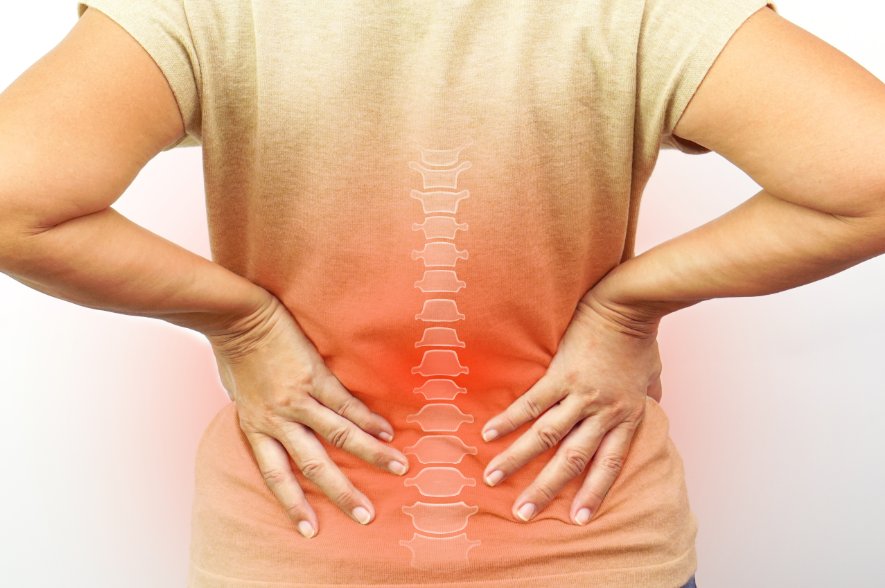Discover common hip pain symptoms and explore effective treatment options to alleviate discomfort and improve mobility.
Hip pain is a common issue that can affect individuals of all ages, often arising from injuries, degenerative conditions, or other medical concerns. It can significantly limit everyday activities such as walking, climbing stairs, and participating in recreational sports. Acknowledging the importance of hip pain is crucial, as it impacts not only physical mobility but also overall quality of life.
It’s essential to understand that hip pain management depends on various factors. By addressing hip pain early with the assistance of Orthopedic Specialists of SW FL, individuals can improve their functional abilities and reduce the risk of further complications.
Common Causes of Hip Pain
Recognizing the common causes of hip pain is vital for effective treatment and management. Hip pain can stem from acute injuries, chronic conditions, or overuse. Identifying the root cause is essential for selecting the appropriate treatment and resuming normal activities.
Arthritis
Arthritis is one of the leading causes of hip pain, impacting individuals by causing inflammation, stiffness, and pain in the joint. Osteoarthritis, the most common form, occurs when the cartilage that cushions the joint deteriorates over time, leading to bone-on-bone contact. This results in increased friction, swelling, and discomfort that can severely limit mobility.
Rheumatoid arthritis, an autoimmune condition, can also affect the hip joint, causing inflammation that leads to joint damage and further pain. Symptoms of arthritis in the hip may include persistent aching, reduced range of motion, and difficulty performing everyday tasks such as bending or lifting.
Bursitis
Hip bursitis occurs when the bursae, small fluid-filled sacs that cushion the bones, tendons, and muscles near the hip joint, become inflamed. This inflammation generally results from repetitive motions or prolonged pressure on the hip, often seen in individuals who participate in activities that require extensive hip use, such as running, cycling, or extensive sitting.
Common causes of hip bursitis include direct trauma to the hip, overuse injuries, or underlying conditions, such as arthritis or diabetes. Individuals with hip bursitis typically experience symptoms like localized pain at the outer hip, swelling, and tenderness, which may worsen with movement or when lying on the affected side.
Fractures
Hip fractures frequently occur in older adults as a result of falls, but younger individuals can also be vulnerable, especially during high-impact sports or accidents. These injuries typically affect the upper part of the femur and often necessitate surgical intervention, followed by rehabilitation. Recovery from a hip fracture usually spans several weeks to months, varying based on the severity of the fracture and the individual’s overall health.
Strains
Muscle strains occur when the muscles or tendons around the hip are stretched or torn, commonly due to sudden movements or excessive force during physical activities. Symptoms may include pain, swelling, and limited mobility. Recovery from a strain can vary; mild strains may heal within a few weeks, while severe cases may take longer and require physical therapy.
Tears
Hip labral tears affect the cartilage around the hip joint and can occur due to repetitive movements or sudden trauma. Patients often experience sudden hip pain, particularly in the groin or outer hip, along with challenges in stability and movement. Recovery from a labral tear can take anywhere from a few weeks to several months, depending on the chosen treatment and individual healing capacity.
Tendinopathy
Hip tendinopathy is a condition characterized by the degeneration of tendons around the hip joint, resulting in pain and limited functionality. It often arises from repetitive stress or overuse, which can lead to micro-tears and inflammation. Symptoms typically include persistent hip pain, stiffness, and discomfort during activities such as walking, climbing stairs, or exercising.
Several factors can contribute to hip tendinopathy, including a loss of tendon elasticity due to aging, making tendons more susceptible to injury. Individuals engaged in repetitive sports or activities, like running, cycling, or weightlifting, face a higher risk. Additionally, poor biomechanics, weak hip muscles, and inadequate warm-up or stretching routines can elevate this risk.
Diagnosing Hip Pain
Accurate diagnosis is essential for effectively managing hip pain and determining the right treatments. A comprehensive evaluation includes patient history, physical examinations, and diagnostic imaging to uncover the underlying causes of discomfort. Hip pain can stem from various issues, such as arthritis, injuries, compressed nerves, or torn cartilage. Typically, patients report pain in the groin, thigh, around the hip joint—both inside and outside—and in the buttocks. This thorough assessment helps healthcare providers develop customized treatment plans aimed at improving recovery and outcomes. In this section, we will delve into common diagnostic methods for hip pain and emphasize the importance of early intervention.
Medical History and Physical Examination
The evaluation process for hip pain starts with gathering a detailed medical history. Physicians seek crucial information about the patient’s symptoms, previous injuries, and any pre-existing conditions, which inform the next steps in assessment. Patients are asked about the onset, duration, and location of their pain, as well as any elements that may worsen or alleviate their discomfort. Additionally, understanding the patient’s activity level and lifestyle can help identify potential causes, including those related to blood flow.
Following the medical history review, a physical examination assesses hip function and identifies areas of tenderness or limitation. Common assessments include:
- The FABER test for hip joint issues
- The Trendelenburg test for hip stability
- The Thomas test for hip flexor tightness
These tests, along with imaging techniques like X-rays or MRI, are crucial for diagnosing the issue and developing an effective treatment plan.
Imaging and Tests
Accurate diagnosis of hip pain often relies on various imaging techniques and diagnostic tests.
- X-rays are typically the first step in evaluating bone structures, revealing fractures, arthritis, or joint alignments.
- CT scans provide comprehensive cross-sectional images of the hip, assisting in complex cases where a more detailed view of the bone is necessary.
- MRIs offer detailed images of soft tissues, including tendons, ligaments, and cartilage, making them invaluable for identifying conditions like labral tears and tendinopathy.
- Blood tests can help rule out inflammatory or infectious conditions.
- Joint fluid analysis assesses for issues like gout or infection by examining the synovial fluid within the hip joint.
These diagnostic tools work together to facilitate a precise understanding of the underlying causes of hip pain, allowing for a tailored treatment strategy.
Treatment Options for Hip Pain
Effectively managing hip pain requires addressing underlying causes and alleviating symptoms. Treatment options vary from conservative methods like physical therapy and medications to more invasive procedures such as injections or surgery.
Non-Surgical Treatments
Non-surgical treatments offer various ways to manage and alleviate symptoms without the need for invasive procedures.
- Lifestyle modifications: Weight management and regular exercise can significantly reduce stress on joints and improve overall mobility.
- Physical therapy techniques: Tailored exercises and techniques aimed at increasing strength and flexibility can help maintain functionality and reduce pain.
- Medications for pain relief: Nonsteroidal anti-inflammatory drugs (NSAIDs) and corticosteroids can provide temporary relief from pain and inflammation, helping improve quality of life.
Surgical Treatments
Surgical intervention may be indicated when non-surgical methods fail to alleviate hip pain and dysfunction. Common procedures include hip arthroscopy, which addresses minor joint issues, and hip replacement surgery. Hip replacement involves replacing the damaged hip joint with a prosthetic implant, offering significant pain relief and improved mobility for patients with severe joint damage.
When Is The Best Time To Meet With A Hip Specialist?
Recognizing when to consult a hip specialist is crucial for managing recurring hip pain and ensuring optimal recovery. Early intervention can help relieve pain, prevent further complications, and enable individuals to return to their normal activities. It’s especially important for those with persistent or severe symptoms to seek professional advice.
Consider scheduling a consultation if you experience:
- Hip pain lasting 4-6 weeks without improvement
- Pain that eases but returns when you resume regular activities
Additional signs that warrant professional attention include:
- Loss of range of motion
- Pain while walking
- Stiffness after prolonged inactivity
- Groin pain that worsens at night
The benefits of early diagnosis and treatment include preventing or delaying the need for surgery and avoiding ongoing damage. Physiotherapy after treatment plays a vital role in regaining mobility and establishing effective recovery goals. Addressing these issues promptly can lead to better outcomes and help maintain an active, pain-free lifestyle.
Don’t Let Hip Pain Hold You Back – Seek Treatment Today!
Maintaining hip health is essential for improving quality of life and preventing future issues, especially as neglect can lead to worsening pain. Engaging in regular physical activity and following a balanced diet contribute to joint health. Incorporating strength and flexibility exercises, ideally with guidance from a physical therapist, can aid recovery and strengthen the muscles around the hip.
If you’re dealing with persistent hip pain, it’s crucial to take action now to enhance your quality of life. At Orthopedic Specialists of SW FL, our expert team is ready to provide a thorough evaluation and personalized treatment plan tailored to your needs.
Don’t let discomfort limit your mobility or daily activities—taking the first step toward recovery can lead to significant improvements. Whether through non-surgical options or advanced surgical techniques, we’re dedicated to helping you regain an active, pain-free lifestyle.
Contact us today to book your appointment and start your journey towards healthier hips! Your well-being is our priority, and we’re here to support you every step of the way.


